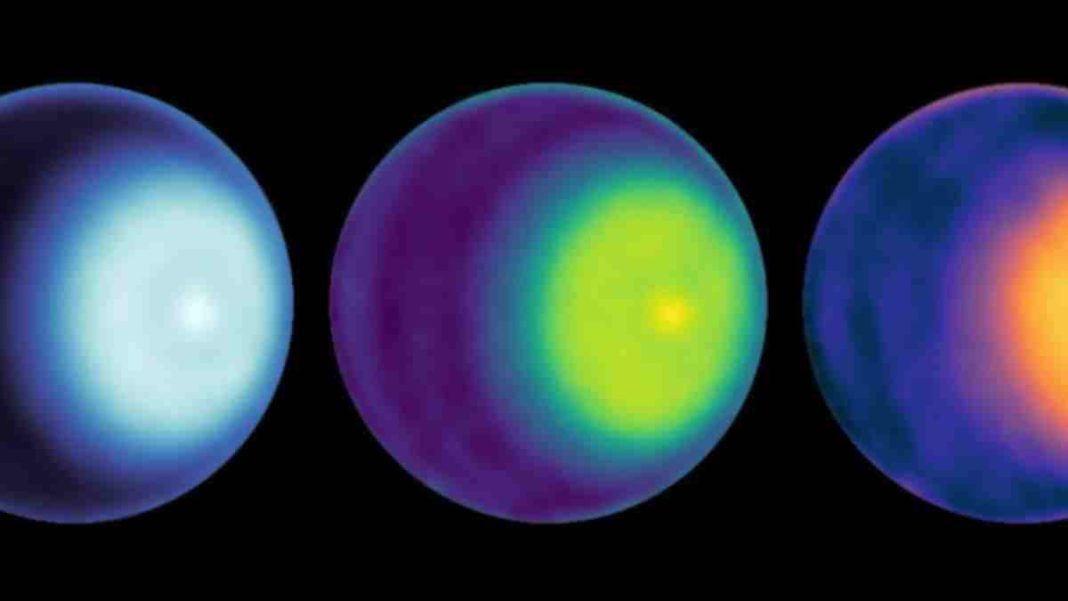UNITED STATES: Astronomers have unlocked the captivating secrets behind Uranus’ mesmerizing light shows by successfully observing its infrared aurora for the first time. This discovery, akin to the dazzling auroras witnessed on Earth, provides fresh insight into the unique properties of the ice giant’s auroral glow.
Just as Earth’s Northern Lights are ignited when charged particles from the solar wind interact with the planet’s magnetic field, steering them towards the magnetic poles, Uranus exhibits a similar phenomenon. When these charged particles enter Uranus’ atmosphere, they collide with its atmospheric molecules, causing them to emit light.
However, what sets Uranus’ auroras apart is the composition of its atmosphere. While Earth’s auroras produce a vibrant display of red, green, and blue colors due to collisions with oxygen and nitrogen atoms, Uranus boasts a distinctive spectacle.
This gas giant’s predominant atmospheric gases are hydrogen and helium, which exist at much colder temperatures compared to our home planet.
Consequently, Uranus’ auroral glow primarily emits ultraviolet and infrared wavelengths, creating a striking visual contrast.
The ultraviolet aurora on Uranus was first observed in 1986 during NASA’s historic flyby of the planet Voyager 2. Nevertheless, it has taken nearly four decades to detect its infrared counterpart, shedding light on a previously unseen aspect of this distant world.
In a groundbreaking achievement, a team of astronomers, led by graduate student Emma Thomas from the University of Leicester in England, delved into archived data collected in 2006 using the Keck II Near-Infrared Spectrometer (NIRSPEC). Their analysis unveiled the presence of emission lines originating from the H3+ molecule.
H3+ is a special kind of trihydrogen cation that has a positive charge since it has three protons and only two electrons. When charged particles come into contact with molecular hydrogen, they ionize and create H3+ cations, which is what causes the observed Uranus emission.
This fascinating phenomenon generates an awe-inspiring infrared auroral glow over the planet’s northern magnetic pole, offering a rare glimpse into Uranus’ northern lights.
Discussing the implications of their findings, Emma Thomas noted, “The key puzzle is how these gas giant planets are so much hotter than expected, since the temperature of all of them, including Uranus, is hundreds of degrees higher than what models would indicate if they were solely warmed by the sun.”
She went on, “According to one idea, this is caused by the intense aurora, which produces and drives heat from the aurora towards the magnetic equator.”
Also Read: NASA to Develop a Nuclear-Powered Lander for Titan



